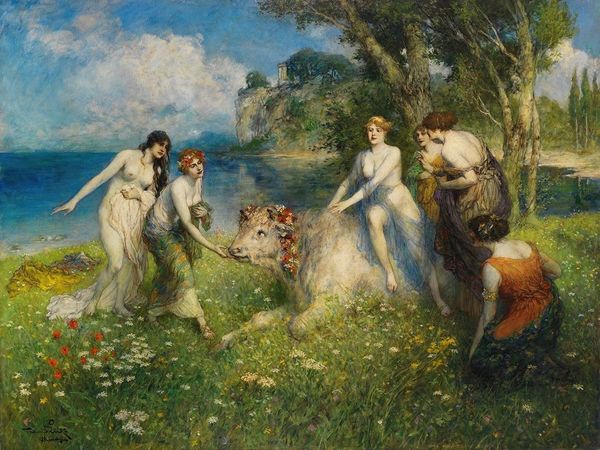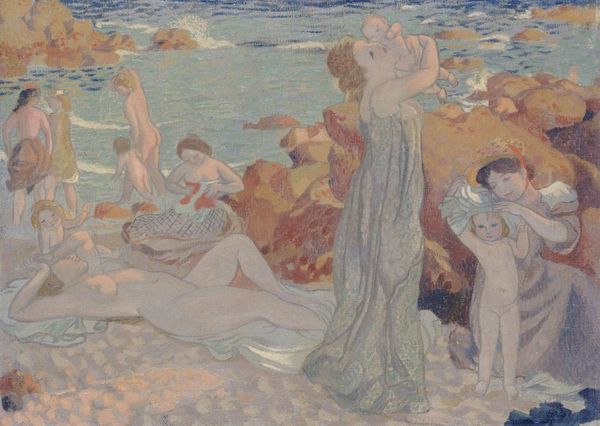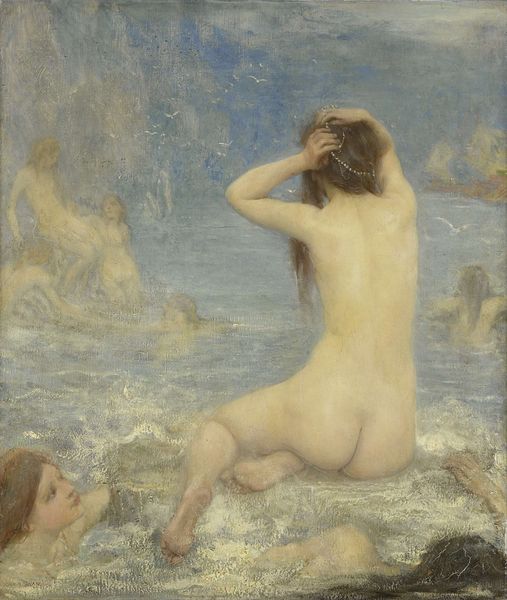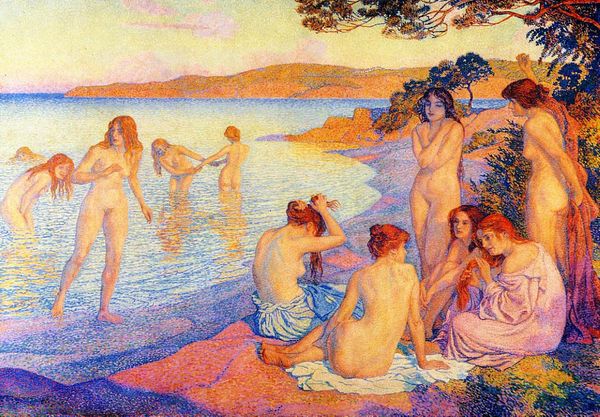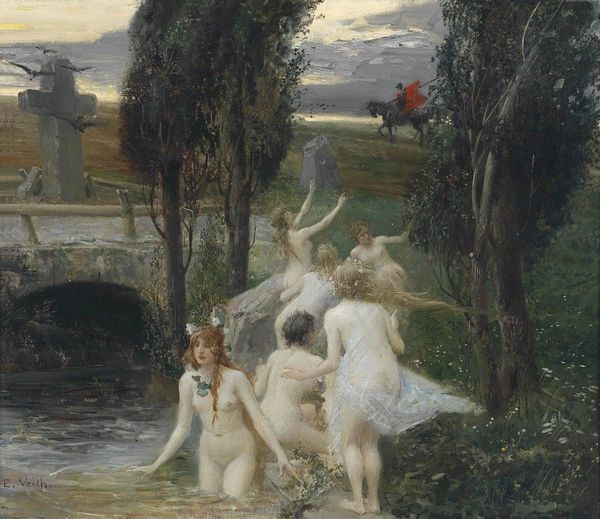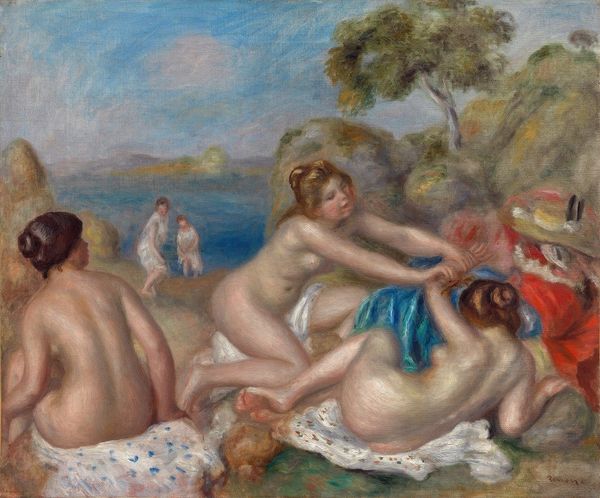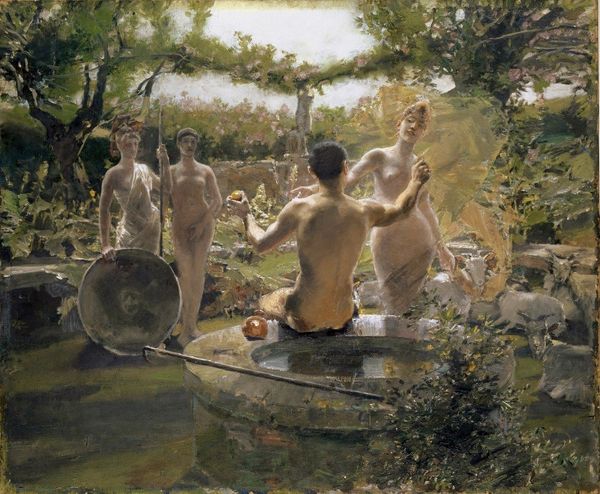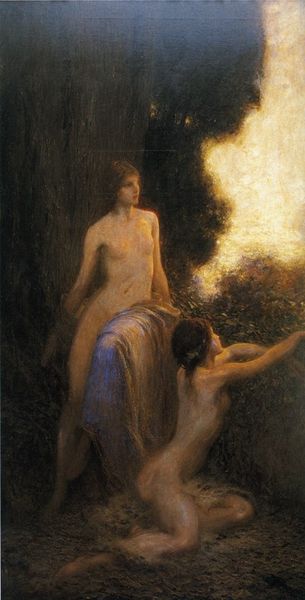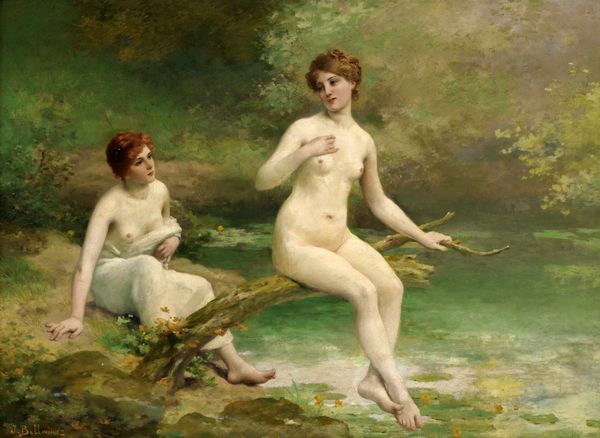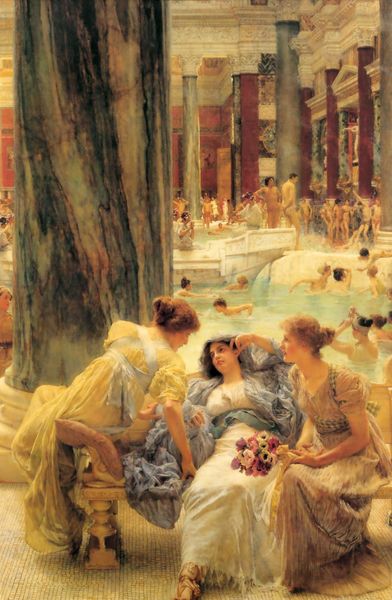
painting, oil-paint
#
gouache
#
fairy-painting
#
painting
#
oil-paint
#
landscape
#
oil painting
#
romanticism
#
mythology
#
painting painterly
#
genre-painting
#
nude
#
watercolor
Copyright: Public Domain: Artvee
Curator: Let’s turn our attention to "Urteil Des Paris" ("Judgement of Paris") a painting attributed to Eduard Veith. What strikes you initially about this oil on canvas? Editor: A definite air of melancholy hangs over it. Even the lush landscape seems muted. Paris, especially, looks burdened by the choice before him. There's also an element of theatricality that suggests the painting wants to examine how judgements, beauty standards, and moral conflicts get mediated. Curator: Interesting. This work brings into focus the myth of the Judgement of Paris. Veith seems interested in how the visual tropes of Romanticism shape the narrative. Consider how classical myths are continuously revisited in the arts; it almost seems that Veith, painting towards the later part of Romanticism, uses the established landscape elements in order to talk about that tradition itself. The style situates itself and reflects on an imagined Arcadian past. How might symbols enhance our appreciation? Editor: Absolutely. A key symbol for me is that rather quizzical fox. A motif, for one, and a creature associated with cunning. Does it signify Paris’s inner turmoil, maybe the wisdom—or the deceit—needed to make his impossible choice? And the apple itself! A symbol of discord, yes, but also of knowledge and temptation. Here it becomes a tangible representation of moral consequence and self-determination. I notice how, of course, the Goddesses await that fateful selection with anxiety. This is such a clear, traditional image of looming and often unfair judgement of women’s appearances by powerful (and, in this image, distinctly bored-looking) men. Curator: Your reading brings another perspective to the interplay of social norms within mythological settings, highlighting themes of responsibility and self-awareness within the historical context of representation. Ultimately the piece engages its own past by considering that social critique as the story is literally told. Editor: I find myself reflecting on how the enduring power of mythological imagery provides a kind of mirror to our contemporary social preoccupations with judgements and standards, the costs of choosing and being chosen. Curator: Indeed. This invites us to view the artwork less as a mere historical artifact and more as an ever-relevant tableau of choice and consequence, a reminder perhaps of art’s constant negotiation with its traditions.
Comments
No comments
Be the first to comment and join the conversation on the ultimate creative platform.
